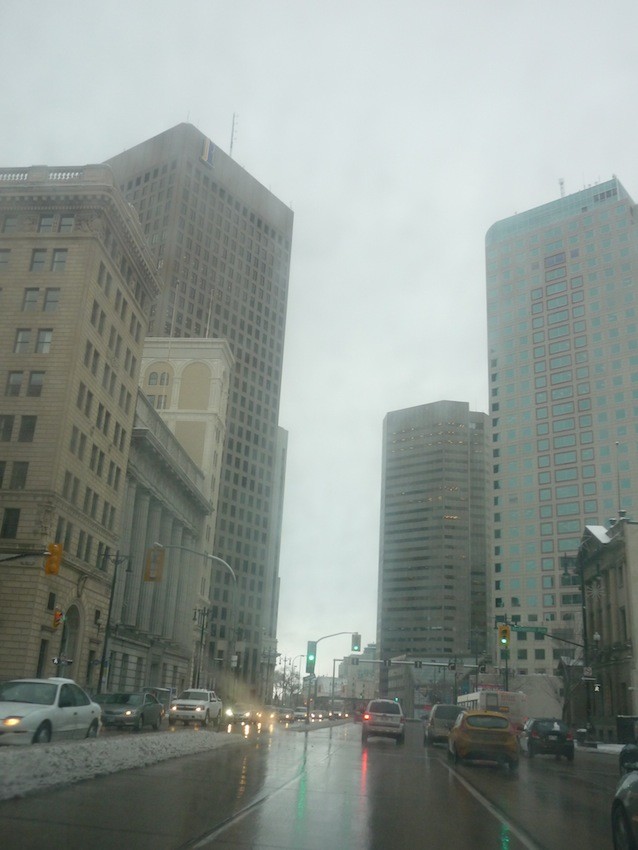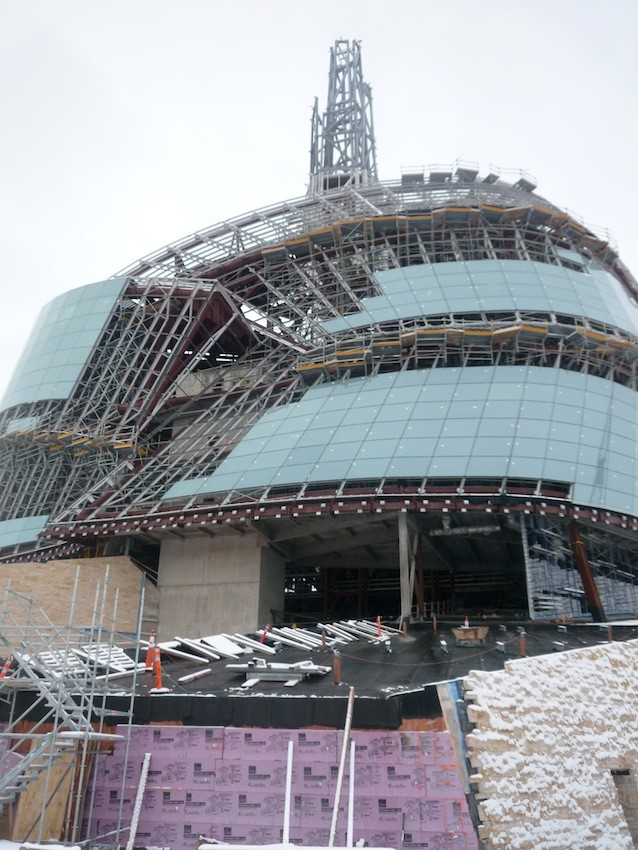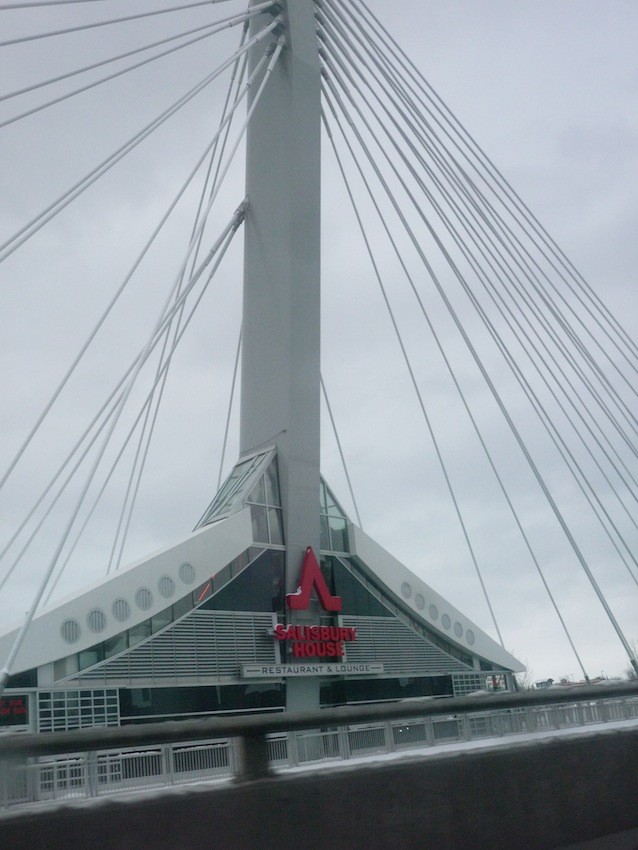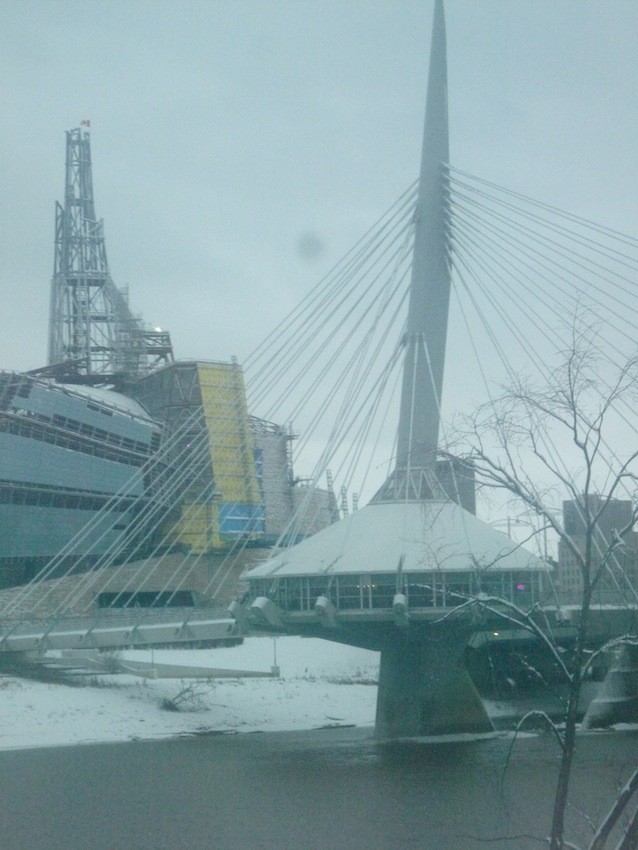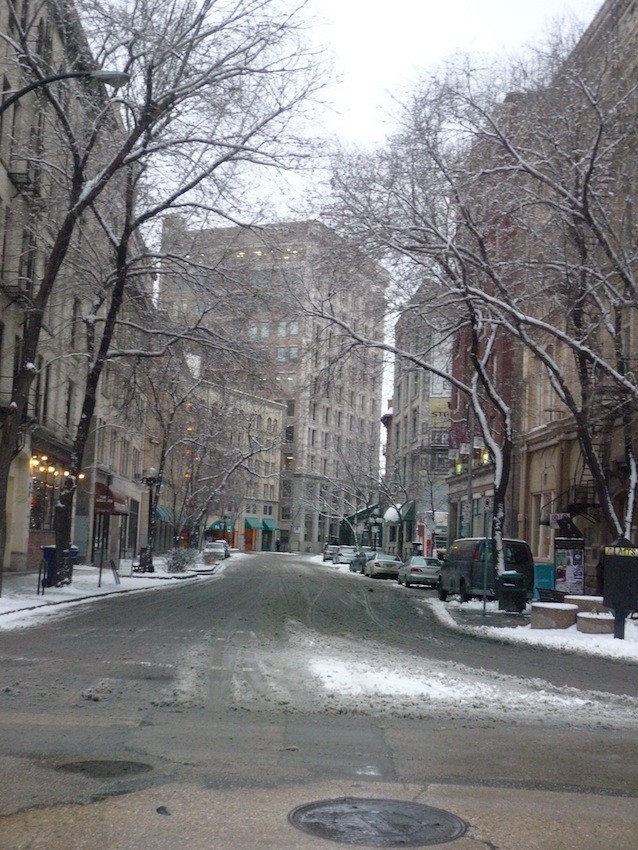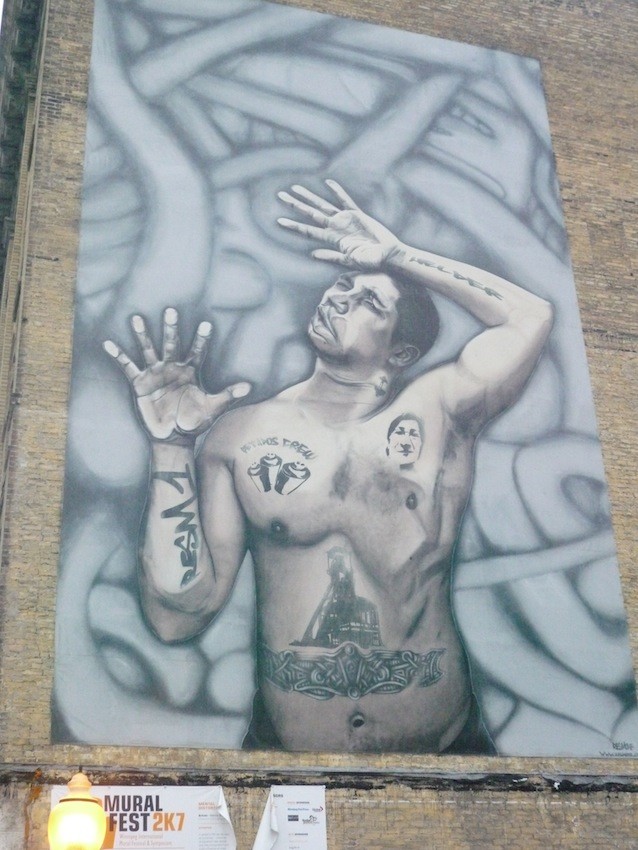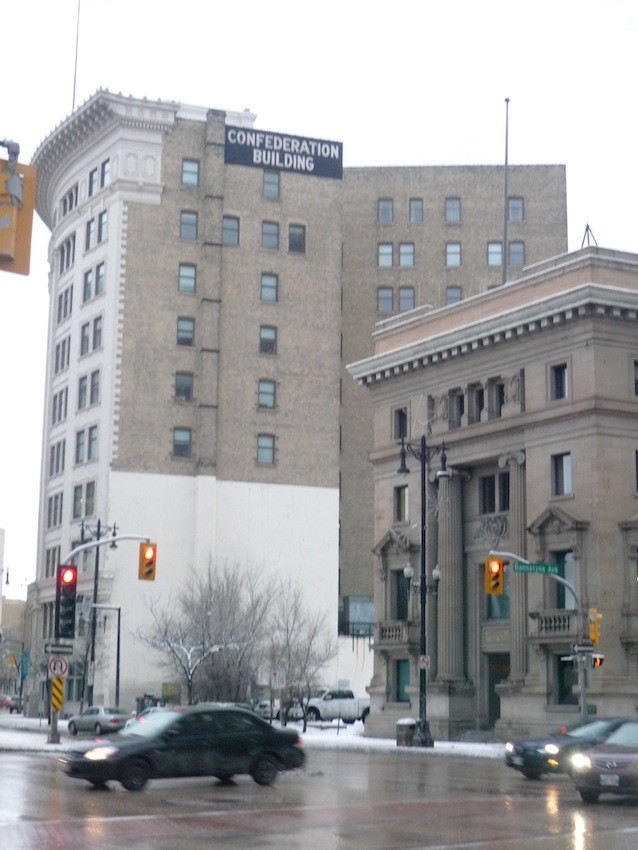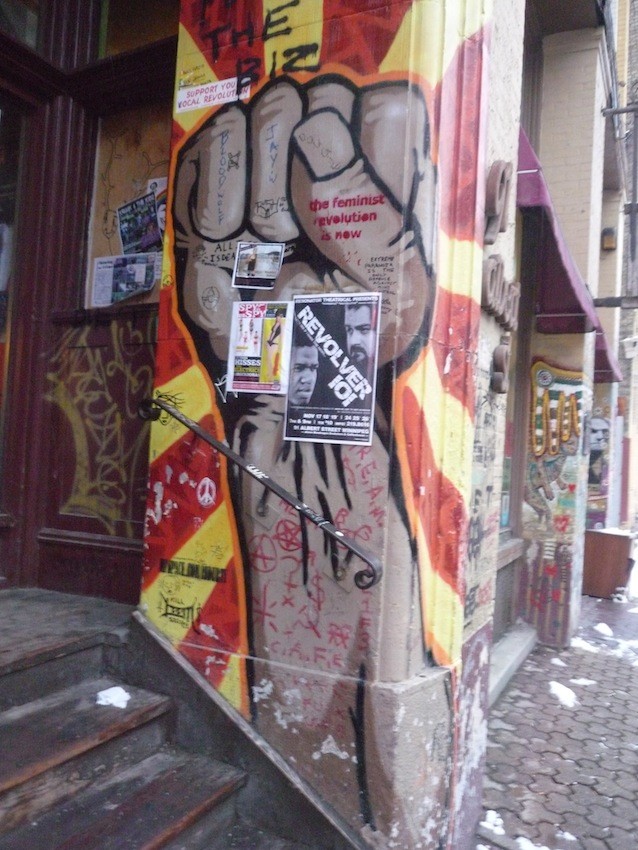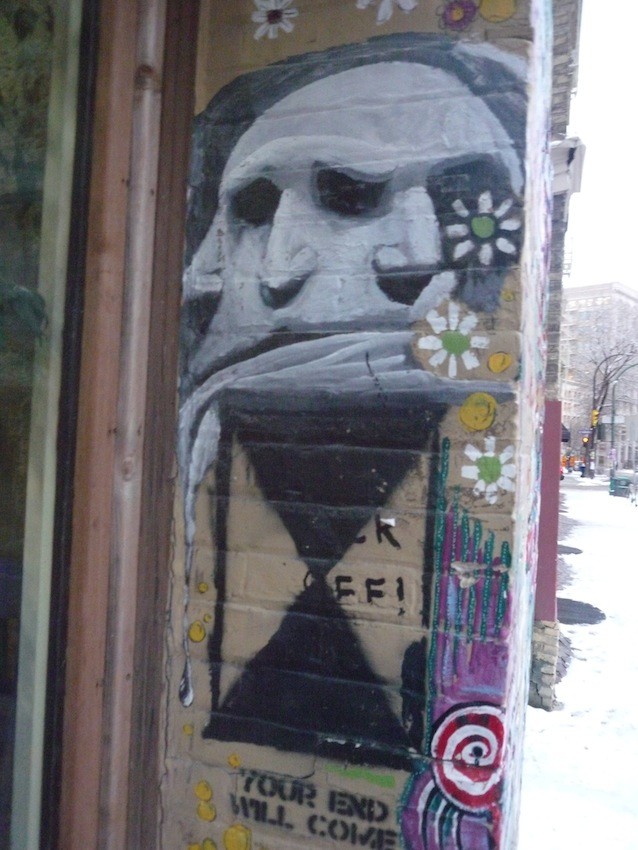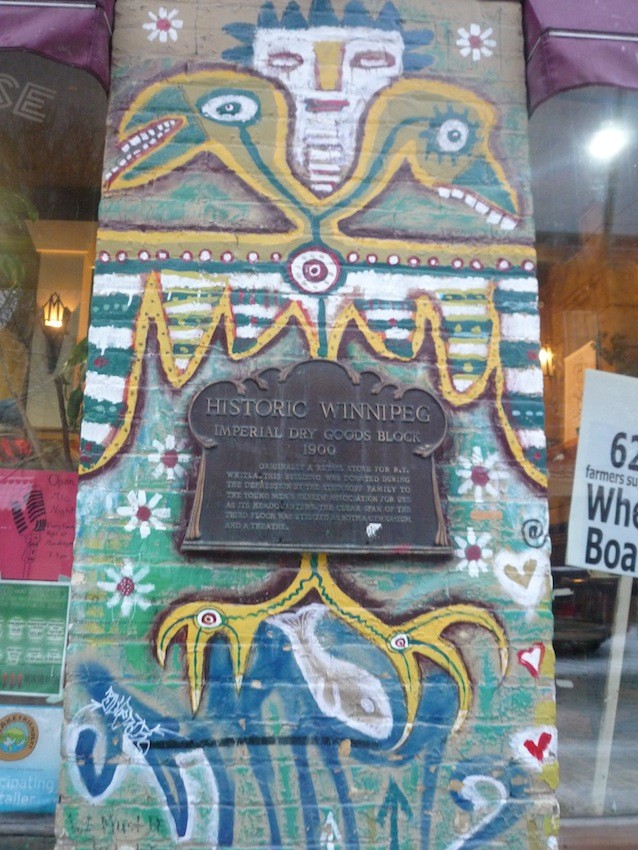I know, I know, I’m not supposed to write anything about specific Canadian cities for my VICE column. Even when I talk about appearances by American folk heroes like John Waters in Toronto, I’m greeted with a rousing chorus of “Who cares about what happens in Toronto!?” Or maybe it’s just Bore-onto itself that people don’t care about. So I’m going to go out on a barren winter limb and write about Winnipeg, Manitoba, where I’ve spent the last six days showing my short films at the Plug-In Gallery, djing at an outrageous speakeasy called The Orphanage, and giving a lecture at the University of Manitoba. If you don’t like it, go read about Walla Walla, Washington.
Annons
Despite my two columns identifying Canada as the new Evil Empire and the international go-to neo-colonialist nightmare du jour, people—particularly Americans—seem to have a vast and unrelentingly willful ignorance about the second largest country by land mass in the world (just ahead of the USA and behind Russia, in case you’re interested). It’s also a country with one of the lowest population densities in the world, so it’s true that when you travel to the Prairie Provinces like Manitoba, of which Winnipeg is the capital, people are rather few and far between. I like that. In a world of 7 billion people, it’s nice to have a little elbow room. One factoid, however, does always creep me out: According to statistics, 72 percent of the Canadian population is concentrated within less than 100 miles of its southern border with the US. Sounds a little too needy and co-dependent to me.The streets of Winnipeg are wide and flat, and the buildings, a great many of them stand-alone, can be viewed from all angles, set in stark relief against the pure prairie skies. At times, especially late at night, you can almost imagine you’re in a ghost town—or perhaps more accurately, a zombie town. In fact, there is a strange phenomenon that I was told about, and that I witnessed for myself. In the evening hours it’s not uncommon to see Aboriginal people (Winnipeg is built on ground that has belonged to First Nations tribes since prehistoric times) slowly walk across the wide streets, oblivious to the traffic, almost as if they are in a zombie state. Often they are hit or almost hit by cars, which tend to be driven recklessly fast on the spacious, barren streets. There’s some speculation about whether it’s because they obstinately refuse, on some deep psychological level, to acknowledge the interlopers on their land, or, sadly, on occasion, if they just don’t care, or if their judgment is impaired by the blight of alcohol, such is the plight of the ill-treated and forgotten nation that originally occupied North America. I know it’s politically incorrect to talk about such things, but it's something I felt needed to be acknowledged. To me it brought to mind Chief Dan George in Little Big Man, who believes, after having a vision in a dream, that he’s invisible to the white man, and walks through the battlefield without fear of being hit by their bullets. But I guess that’s just putting a romantic spin on it.
Annons
Anyway, lots of white people die in Winnipeg too, often by drowning. Winnipeg is built around the confluence of the Red and Assiniboine Rivers, a point known as The Forks. It’s a bit like Pittsburgh in that regard (but without the hills), another unfairly maligned but actually beautiful city where two mighty rivers, the Allegheny and Monongahela, converge. I heard many stories of drownings in these harsh and forgiving rivers (Winnipeg, which lies at the bottom of the Red River Valley, a low-lying plain, is famous for its flooding); one woman I met proudly told me she’s personally witnessed three (factoid: Winnipeg comes from a Cree word meaning “Muddy Waters”). One of the most famous drowning stories of the city is told in my friend, the Winnipeg filmmaker Guy Maddin’s amazing documentary My Winnipeg, about a small herd of spooked horses that are frozen in the Red River, their heads sticking out of the ice “like eleven knights on a vast white chessboard.” If you don’t know the film, or Guy’s work in general, he’s only one of the greatest living film auteurs in the world. Despite your distaste for things Canadian, I suggest you check him out.If you’re still not sold on Winnipeg, did I mention that it has the highest murder rate in Canada, and that there is enough gang violence to compete with certain areas of South Central Los Angeles? It’s not all just quilting bees and cow paths, not by a long shot. In fact, the north end of Winnipeg reminds me a bit of Belfast, Northern Ireland, with its ubiquitous wall murals and the troubles of the First Nations peoples written in the language of the streets.
Annons
I could go on and on about Winnipeg, about the fun YouTube party I went to at CCCP, or getting thrown out of the construction site of the highly anticipated Museum of Human Rights (which, of course, is supposedly being built on the site of an ancient Indian burial ground). I didn’t even have time to go into the architecture, which is vastly superior to anything else in Canada (factoid: at the turn of the last century, Winnipeg was known as “Little Chicago”). So I’ll leave you with a few of my visual impressions of the city, and merely encourage you to check it out sometime. Don’t let the 40-degree below zero weather and the endlessly long and unforgiving winters with prairie winds that cut through you like a knife discourage you!Previously - My Favorite Tattoos
